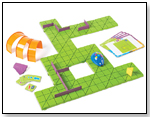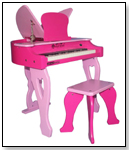|
|
Retail Management Tips: 15 Ways to Increase Profit Margins A few years ago, it seemed everyone was tacking on a gas surcharge for most any product. Delivery prices had gone up, and retailers and service providers were passing the costs along because well, everyone knew gas was expensive. And for many businesses, that was the only time they looked at their margins.
 Unless you're Amazon with unlimited resources from stockholders, you'll notice such costs have to be made up somewhere. Here are 15 Ways to Increase Profit Margins For Retailers 1. Increase prices. You can selectively raise the price of your most popular items to most effectively add to your bottom line. You don't have to increase prices across the board. And remember, no one knows the price you pay but you. 2. Narrow your focus. You can't be all things to all people. It's the difference between a restaurant with a menu of 200 mediocre items and one with twelve items that are outstanding. Consider how much profit you are making on your slower-moving items. Could that shelf space be devoted to quicker-moving, more profitable items? Yes! 3. Limit the discounting. Without a plan, you'll do anything to get money in the bank. I know one toy store owner who, when she had to pay bills, turned to Twitter to tell her followers they'd get 30 percent off if they came in that day. She thought she was brilliant. What she didn't realize was that she was robbing herself of profit to pay her bills. She was teaching customers to simply wait for the next tweet. She needed a quarterly promotions schedule, and so do you. 4. Cut waste. You want to get more done with who you have. Are there jobs you're hiring others to do that you could possibly complete with staff? Do you really need to pay a window washer, for example? 5. Schedule employees to need. Do you have three people to open when you could use two for the first couple hours? On the other side, add staff if you are slammed every Saturday, so you don't make customers wait and lose them to a competitor. 6. No overtime. Period. Don't let hourly managers fill-in for lower-cost hourly employees. Use salaried employees if something comes up. 7. Don't schedule for the convenience of your employees. If all you need Vivian for is four hours, then give her four, even if she would rather work eight. 8. Award extra hours based on merit. Grant employee requests for more hours based only on their average sale or number of units sold per customer, not simply on their request or need. 9. Personally hand out all paychecks. When you personally see how much each staff member takes home, it makes costs real for you. 10. Give bonuses when deserved. Pay bonuses that are proportionate to the amount of profit the business brings in rather than total sales numbers. Otherwise, you could be rewarding an Expressive or Driver personality type salesperson who discounts to make the sale, robbing you of the profit. 11. Look for theft by matching inventory to sales. A restaurant franchise I know audits for internal theft by simply matching how many cups it receives to the number of drinks ordered. 12. Cut vendors. When you buy more from fewer vendors, you'll often get a better deal on pricing, shipping, and dating. Ordering only a few items from a number of different vendors requires more bookkeeping and tracking, and you often pay top-dollar to try to meet each one's minimum orders. No one's items are that special. 13. Combine your orders with other dealers to get freight and larger order discounts. Just be sure to decide ahead of time which of you will do what, and pay before delivery to avoid problems. 14. Sell added value by bundling products and services. Best Buy's Geek Squad promises it can Fix any computer problem-anytime, anywhere. Of course it leaves off For a price. People don't want the hassle of figuring things out or screwing things up. Customers value their time and will pay for worthwhile services related to the products you carry. Selling added value is the way to a very profitable future. 15. Fire unprofitable customers. Those who need a lot of hand-holding, always beat you up on price, or constantly call you with some problem take up a lot of time. If your company is large enough to evaluate this, ask your order desk or sales reps to provide their top 10 complainers and match them to the amount of profitable orders they generate. Even if they deliver large volume, if they don't pass, tell them that while you appreciate their business, the costs to manage the account outweigh the profitability and you therefore must implement a price increase. In Sum The best times to evaluate your profit margins are after you've done a full physical inventory to see how much of your money is on the salesfloor, during the first quarter after the dust has settled from the holidays, and around tax time when you have a current profit and loss statement. The key is to never be afraid to find ways to increase your profitability and to not ever assume improved margins only come by cutting staff. That said, most of my posts revolve around retail sales training which is how you grow sales by increasing number of items sold and selling the more expensive item. Those too help increase your profit margins. Use these 15 retail management tips to help improve your profit margins so you'll be in business for years to come.  Writer's Bio: Bob Phibbs is the Retail Doctor®, a best-selling author and speaker who has helped thousands of independent businesses compete. His new book, The Retail Doctor’s Guide to Growing Your Business has received praise from both Inc. magazine and USA Today and can be found at your local bookstore or ordered at http://www.retaildoc.com/guide. He and his work have been featured in the New York Times, the Wall Street Journal and Entrepreneur magazine. Questions? Contact Bob at info@retaildoc.com. This article was reprinted with permission of the author, Bob Phibbs, aka The Retail Doctor®. Read more articles by this author Writer's Bio: Bob Phibbs is the Retail Doctor®, a best-selling author and speaker who has helped thousands of independent businesses compete. His new book, The Retail Doctor’s Guide to Growing Your Business has received praise from both Inc. magazine and USA Today and can be found at your local bookstore or ordered at http://www.retaildoc.com/guide. He and his work have been featured in the New York Times, the Wall Street Journal and Entrepreneur magazine. Questions? Contact Bob at info@retaildoc.com. This article was reprinted with permission of the author, Bob Phibbs, aka The Retail Doctor®. Read more articles by this author |
| ||||||||||||||||||||||||||||||||
Disclaimer Privacy Policy Career Opportunities
Use of this site constitutes acceptance of our Terms of Use.
© Copyright 2025 PlayZak®, a division of ToyDirectory.com®, Inc.



